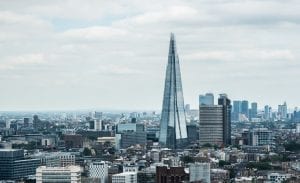Once your application has been completed and is approved by the Home Office, then you will have indefinite leave to remain and, should you stay in the U.K. for a further 12 months, will become eligible to apply for full British Citizenship.
ILR or indefinite leave to remain is a status within the U.K. immigration system that means a person has the right to live and work in England, Scotland, Wales or Northern Ireland ‘indefinitely’.
While there are differences between ILR status and citizenship in the U.K. it does represent an important step towards achieving it. The main differences between the two status’s are that citizens have entitlement to certain benefits that those with ILR do not, and that ILR, as the name implies is not necessarily permanent.
‘Indefinite’ leave to remain is able to be revoked under certain circumstances. For example, if you were to leave the U.K. for 2 years or more the Home Office may remove your ILR status, which would mean you would need to apply for a new visa through one of the approved routes in order to re-enter. Another reason for removal is if you arrived in the country seeking refugee status, and the reason you needed to flee your home nation was resolved, the Home Office may reasonably expect you to return to your country of origin.
Despite this, you will be able to receive help from the U.K.’s benefits system should you become unemployed or be unable to work as the result of illness or injury. You will also be free from the cycle of visa renewal and be able to access treatment through the NHS without the need to pay the annual immigration health surcharge.
So how does someone obtain an ILR status?
If you’re currently residing in the U.K. and wish to apply for indefinite leave to remain, there are a few things you can do to see if you’re eligible. The first is to check that your particular visa route carries eligibility to progress to ILR. If it doesn’t then you may be able to switch to a more appropriate visa in order to work towards applying. The second is to check the amount of time you’ve been living in the U.K.
For most visa types, the residence period required to apply for indefinite leave to remain is between 2 and 5 years. Additionally, you’ll need to prove that you haven’t left the U.K. for a period of more than 180 cumulative days in any 12 month period. If you meet the above criteria, then you’ll be able to move forward with your application. At this point, you’ll need to provide more evidence to the Home Office in order for your application to be processed, some things you will likely already be able to evidence, but for other criteria you may need to take some additional steps.
Firstly, you’ll need to be able to show that while in the U.K. you’ve lived ‘lawfully’. This means that you have to prove that you have been living within the requirements set by the visa you used to enter your country of residence.
You’ll need to complete a test known as the ‘life in the U.K. test’. This multiple-choice test consists of 24 questions chosen at random in order to test a candidate’s knowledge of U.K. geography, history and culture. The material covered by the questions is available to candidates in the form of a handbook which candidates can study before they take the test. It incurs a fee of £50 which must be paid again if the test needs to be re-taken. If you should fail the test, there are no limits to the amount of times you will be able to attempt it. In order to pass the exam, you will need to score at least 75% and the test itself should last around 45 minutes.

In addition to the life in the U.K. test, you may need to complete a test to show your level of ability to speak and understand English, Scots Gaelic or Welsh. Which language you need to prove capacity in will depend upon the country you’re living in when you apply. If your country of origin features English as the spoken language of the majority, or you hold a higher level qualification taught in English, you may be able to bypass this requirement.
The Home Office will require certificates for the above tests, along with evidence of your financial situation, your birth or adoption certificates, a full immigration history, 2 passport-sized photographs and any valid passport from another country that you still hold.
The final point to cover is that of fees. As with any other application made in the U.K. immigration system, there are associated fees that need to be covered when applying for indefinite leave for remain. The application fee as standard is £2389 for the main applicant. If you have any dependents who are applying for ILR along with you, then you’ll need to pay the same fee for each of them. For families, this can quickly become expensive so it’s best to ensure you have the fee’s available before you start the application process.
Although an application for ILR generally takes up to six months to be processed, if you have additional funds available, you are able to expedite the application process. For an additional £500 an ILR application can be completed within five working days, whereas an £800 payment can see an application completed within one working day.
Once your application has been completed and is approved by the Home Office, then you will have indefinite leave to remain and, should you stay in the U.K. for a further 12 months, will become eligible to apply for full British Citizenship.


Join the conversation!